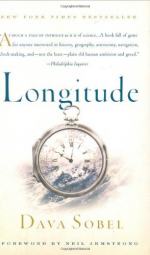
|
| Name: _________________________ | Period: ___________________ |
This quiz consists of 5 multiple choice and 5 short answer questions through Chapter 10: The Diamond Timekeeper.
Multiple Choice Questions
1. What did Huygen's published argument state?
(a) A map with correct currents was necessary to navigate at sea.
(b) Longitude could be determined by the moon.
(c) Jupiters moons were really rings.
(d) A clock could establish longitude at sea.
2. How long did Harrison spend building H-3?
(a) Ten years.
(b) Six months.
(c) Five years.
(d) Twenty years.
3. What two problems did H-3 solve that previous clock designs didn't?
(a) Size and stability.
(b) Temperature and friction.
(c) Force and gravity.
(d) Light and speed.
4. What did Edmund Halley successfully predict?
(a) The navigational currents of the Atlantic.
(b) The accuracy of a clock.
(c) Celestial movements.
(d) The winner of the longitude prize.
5. The moon travels a distance roughly equal to its own width every _________.
(a) Minute.
(b) Second.
(c) Day.
(d) 30 minutes.
Short Answer Questions
1. The Parliamentary committee assembled to respond to the problem of longitude relied on which two experts?
2. Who won the Hooke/Huygens conflict?
3. How long did Harrison work before receiving his monetary reward?
4. Which of Harrison's clocks continue to function to this day?
5. How old was Harrison when he built his first pendulum clock?
|
This section contains 203 words (approx. 1 page at 300 words per page) |

|




